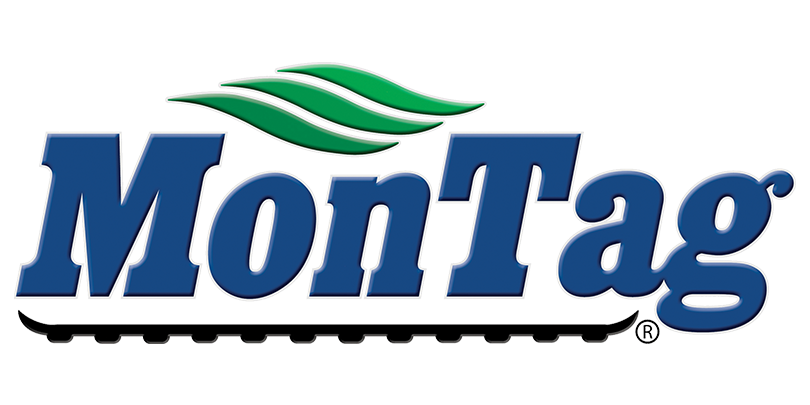On this episode of Conservation Ag Update, brought to you by Montag Manufacturing, growers from across the U.S. share their predictions for the upcoming planting season, including one no-tiller who’s “bullish” about a great spring.
In the Farmer Feature, No-Till Living Legend Jeff Martin, who’s been no-tilling and strip-tilling for decades in Mount Pulaski, Ill., reflects on the eye-opening moment that forever changed his farming philosophy.
Also in the episode, No-Till Farmer associate editor Mackane Vogel checks in with no-till insights from the Conservation Tillage and Technology Conference at Ohio Northern University. Plus, a precision specialist uses an autonomy kit to plant cover crops, and an equipment expert shares a few tips for growers to keep in mind before taking the field this spring.
This episode of Conservation Ag Update is brought to you by Montag Mfg.
Montag Manufacturing has rolled out two new industry-first products. Cover Crop Plus is the first metering system dedicated to cover crop seeds, able to accurately meter even the smallest seeds like cover cress. It can be mounted to tillage implements, combines and self-propelled high clearance machines.
The second new product is the mammoth sized model 2224 with 13 or 16 tons capacity for producers running with larger strip-till implements. For more information, visit the Montag website or your Montag dealer.
TRANSCRIPT
Jump to a section or scroll for the full episode...
- Growers Share #Plant24 Predictions
- Farmer Feature: Jeff Martin, Mount Pulaski, Ill.
- Warren Dick Speaks at Conservation Tillage & Technology Conference
- Ahead of the Curve: Autonomous Cover Cropping
- “An Ounce of Prevention is Better than a Pound of Cure”
Growers Share #Plant24 Predictions
Welcome to the last Conservation Ag Update of March. Planting season 2024 is here. Let’s get some predictions on how things might go from growers across the U.S.
“We’ve had a pretty warm winter so far. Not a lot of moisture. We’ve had almost no snow. Going into the end of February, we’re actually pretty warm at this point. That would leave us to believe that we’ll probably have an earlier spring then normal. If we have a chance to get out there in April, we’ll probably be planting even those no-till acres if the ground is fit.”
– Steve Reinhard, No-Tiller, Crawford County, Ohio
“We are preparing for prevent plant. You don’t want to, but it’s just the way the winter and spring are shaping up. I’m a little nervous that we’re going to have some prevent plant just because October, November and this winter have just been off the charts wet. We just got 2 inches of rain last night, so that will put us out for another month or two now.”
– Jake Drozd, Grower, Allegan, Mich.
“You always think that the perfect spring is around the corner. This one does actually look like it’s setting up to where we can start planting pretty early. We’ll have some unexpected things thrown our way throughout the year. But as we sit, we’re pretty bullish about what this looks like.”
– Steve Sterchi, Grower, Southern Ill.
We have a good growing season ahead of us. It’s been a different type of winter. Warm, cold, snow. Adverse weather. It was 80s and 70s in the Corn Belt this week, and a little bit cooler now. As we look at the year ahead, we’re probably into some extremes, but I’m optimistic about the year. Farmers have done a great job of weather proofing their farms over the year. Agronomists have helped them. I think we’re able to withstand a lot of challenges. We saw that last year. Not too many people were expecting record yields coming out of 2023.”
– Steve Wilkens, No-Tiller, Agronomist, Southeast Wis.
Good point — no-till corn and soybean yields were at 184 and 55 bushels per acre, according to the No-Till Farmer Benchmark Study. Both are higher than the USDA averages.
Farmer Feature: Jeff Martin, Mount Pulaski, Ill.
A no-till pioneer stepped into the national spotlight Tuesday on National Ag Day. Jeff Martin and his sons Doug and Derek starred in the season 3 premiere of ADM’s Faces of Food series. Martin, who’s been no-tilling since 1982, reflects on the aha moment that changed the way he farms.
“4 or 5 years after I started farming, we were still plowing, and we were raising wheat here. We had corn in the middle of May that was about knee high. We had a huge dust storm. I was standing out in the middle of a corn field out here, and the dust was just cutting the corn off at the ground. That’s when I determined this isn’t working. I spent a lot of years researching conservation farming and no-till farming and attended a lot of National No-Till seminars from the No-Till magazine. At that convention, talking to farmers was probably as beneficial as the seminars that we attended because farmers are really innovators.
Martin also strip-tills continuous corn on much of his farm’s 5,000-plus acres. Watch the entire segment on the ADM Advantage YouTube channel.
Now let’s check back in with Mackane for more no-till insights from the Conservation Tillage and Technology Conference.
Warren Dick Speaks at Conservation Tillage & Technology Conference
Last week I had the chance to attend Randall Reeder’s Conservation Tillage & Technology Conference in Ada, Ohio. The event included a star-studded lineup of speakers who touched on no-till, cover crops and all things conservation. I had a chance to chat with retired professor and soil health scientist Warren Dick about his presentation, the conference as a whole and his contribution to no-till’s rich history.
“No-Tillage is not so much about just building carbon in the soil, it's about building resilience in your system. As climate changes we get more extreme events. That carbon that we build into our soil helps infiltrate water during heavy rainfall events or helps store water during drought. I think the long-term no-tillage, where it shines, is the resiliency it provides to the cropping system.”
“I love coming here because you get the farmers here, you get the educators here, you get the extension people here. We are all talking together, learning from each other. What happens in the field, the farmer says well this is what I saw last year and then we can take that into our research program and then what we learn in our research program comes back to the farm so it’s just a great integration of people.”
“We claim we are the longest continuous no-till plots in the world. Kentucky and a few others will kind of argue with us. But they started in 1962 so 2024 makes us 62 years now. It started with the pioneers, Dr. Glover Triplett and Dr. Van Doren and when they retired I took them over for 30+ years until I retired, but they have been such a wonderful outdoor laboratory about what happens when you continue to do no-tillage compared to where you do inversion tillage or plow tillage and they have measured those plots, so many people have come to measure those plots, we’ve given numerous workshops or field tours so they have just been a wonderful resource for Ohio.”
Stay tuned in the coming weeks for lots more content from the Conservation Tillage & Technology Conference.
Ahead of the Curve: Autonomous Cover Cropping
Time now to go Ahead of the Curve. We’re catching up with Jake Warford, precision specialist for Linco-Precision in Nokomis, Ill. He’s working with the Sabanto autonomy kit, which we’ve seen used for mowing and tillage, but as Jake tells us here, it can be used for other things in a conservation ag system.
“I think there’s going to be opportunities in fertilizer and lime spreading. I think cover crop planting is going to be big. I used ours last year to sow some cover crops. And I sowed some wheat with it. The opportunities are kind of endless. Anywhere you can think to make it work, I think there’s an application for it.”
Jake says Sabanto’s philosophy has been “crawl, walk, run.” He says right now they’re probably walking.
“An Ounce of Prevention is Better than a Pound of Cure”
Wrapping up with our Video of the Week. Dave Sender from Environmental Tillage Systems has a couple things to keep in mind when making sure your strip-till rig and other equipment is ready to go this spring.
“Making sure your technology is all up to date (is important). Make sure all your systems are on the same update level so they can communicate. Sometimes that will cause a problem when you try to get up and going. It can be very frustrating and time consuming when you should be getting going. Before putting fertilizer in your tanks, make sure everything runs like it should. If it’s a liquid system, maybe throw a couple hundred gallons of water in there to make sure you don’t have any plugged lines or leaks in your pump. It’s the old saying that an ounce of prevention is better than a pound of cure. Make sure everything is clean and flushed out — that will make life in the spring or next fall that much easier.”
That will wrap things up. Have an interesting photo or video from your farm? Or a story you’d like us to feature on the broadcast? Send me an email at Nnewman@lesspub.com.
And that will wrap things up this edition of Conservation Ag Update. Until next time, for more stories visit no-tillfarmer.com, striptillfarmer.com and covercropstrategies.com. Thanks for stopping by. Have a great day!









Post a comment
Report Abusive Comment